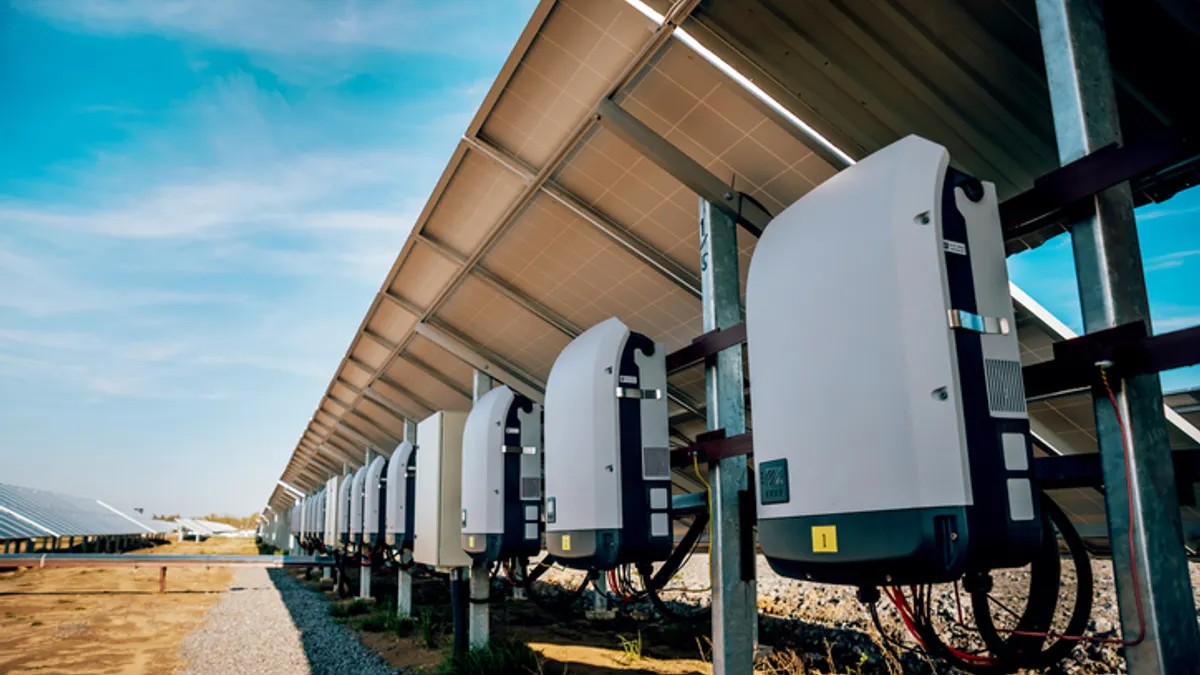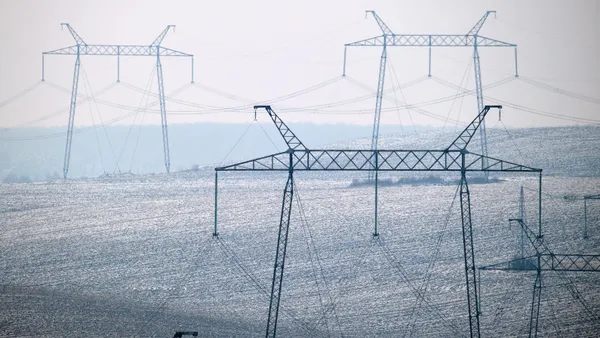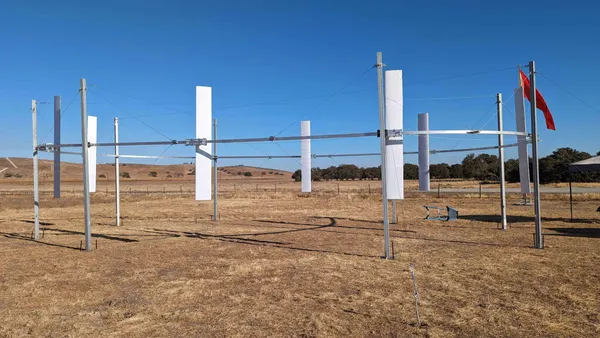It’s becoming a somewhat redundant story: Solar prices are continuing to fall, and utilities are developing more and more of the resource, especially on the utility-scale side of things. This is a fact highlighted by recent reports from the Lawrence Berkeley National Laboratory.
Titled “Tracking the Sun IX,” the first report shows that since 2015, the national median installed price for residential solar systems have fallen 5%, while non-residential systems have seen costs drop between 7% and 9%. Meanwhile, utility-scale solar has fallen the most, totaling 12% since last year. And the price of building solar power plant generation has fallen 60% since 2009.
“The fact that solar is becoming more cost-effective is likely to make utilities more interested in the prospect of ownership,” said Galen Barbose, an LBNL research scientist Galen Barbose and lead author of the report.
As the 30% investment tax credit for solar systems begins to phase down, utilities should be aware of market changes. Until the phase-down begins in 2019, “the price of utility-scale solar is still dropping but utility leaders should take a close look as soon as possible,” said Mark Bolinger, another LBNL research scientist and author of the lab’s report “Utility-Scale Solar 2015; An Empirical Analysis of Project Cost, Performance, and Pricing Trends in the United States.”
“The time to act is before 2019,” he said.
As usual, falling prices are driving solid growth. With the 7,260 MW solar buildout in 2015, the utility-scale solar sector broke its own growth record with a 6% percent jump from 2014. Bolinger points to falling prices of power purchase agreements (PPA) also as key to understanding the market’s expansion.
“The primary reason the market is expanding is that power purchase agreement (PPA) prices have come down and solar has become more economical in a greater number of places,” Bolinger said. “Utility-scale solar is now spreading to the Southeast, to Texas, and we are even seeing reasonably priced projects in the Upper Midwest, in states like Minnesota and Michigan.”
With 28% of last year’s growth in utility-scale solar seen in states outside California and the Southwest, it’s clear utility executives around the country are starting to see the value proposition in solar — both buying it on the market and owning it themselves.
Two such utility officials in Arizona and Texas echoed Bolinger’s findings.
“Solar is always a good idea, but each utility needs to figure out to what extent solar can be a cost effective solution for its own portfolio,” said Carmine Tilghman, senior director for energy supply at UNS Energy, parent company of Arizona utility Tucson Electric Power.
Despite residential price drop, utilities cautious
TEP has been a leader in contracting for utility-scale solar, can claim a successful community solar program, and was one of the first investor-owned utilities to obtain regulatory approval for ownership of residential rooftop solar.
While the utility continues to see value in owning rooftop solar, it’s not a money-maker, Tilghman said. Such users often don’t pay their fair share to maintain the grid, resulting in a cost-shift for grid upkeep costs onto non-rooftop solar users, Tilghman added.
Proper rate design could help TEP clear the cost-shift obstacles, but until then, the rooftop solar program will only be used to help meet the distributed generation requirements of the state’s renewable portfolio standard, Tilghman said. TEP is also developing a community solar offering “based on the fixed price tariff concept that the utility expects to be far more cost effective,” Tilghman said.
According to LBNL’s “Tracking the Sun” report, there’s a steady “downward trend” in the residential and non-residential solar prices, but the price decline also slowed down last year.
It is certainly possible the "low hanging fruit has been picked" and future cost savings will be harder to obtain, LBNL’s Barbose said. “But this also could be a blip in the data that changes back next year. And, even if cost reductions do flatten, there are other forces that will drive solar adoption.”
Reductions in utility incentives, a better levelized cost of electricity and a shift to loan-financed direct purchases could factor into the slowdown in price decline. But “declining incentives have been a signal to the solar industry to reduce costs and squeeze as much inefficiency out of their operations as possible,” Barbose pointed out.
Changes in purchasing solar hardware may be leading to a better levelized cost of electricity, despite raising the upfront installed cost enough to cause an overall slowing in the median price decline, Barbose said.
"They increase the hardware costs and that increases the installed price but the benefit is performance improvements,” Barbose said. That is likely to result in higher overall output and a shorter payback period for the customer.
And an industry shift among rooftop solar developers from the leasing model and PPA financing to loans could also have a hand in slowing down the price decline.
“A loan often has an origination fee that does not necessarily increase the overall levelized cost, but loads some of the financing cost into the upfront price,” Barbose said. “That tends to slow the rate of decline in the median upfront installed price.”
CPS Energy is one of the few other utilities with a residential rooftop solar pilot program. The utility also just brought a pilot community solar project online and holds PPAs representing nearly 500 MW of utility-scale capacity, according to a company spokesperson.
But the answer to the question of whether the utility sees solar as a good investment was not about price or cost.
“We are seeing solar as an increasingly popular option for our customers across all three programs,” said Ricardo Luna, the senior manager for product development at CPS Energy. Customer interest was a big driver for the solar investments, which helped overcome barriers to solar adoption.
“The two biggest trends we’ve seen are that customers want to participate in solar and [that] there have to be multiple pathways for that participation,” he added.
UNS’s Tilghman echoed his sentiments, saying “ultimately, it’s about providing customer choice.”
Utilities embrace large-scale solar
For utility-scale solar, a mixture of falling PPA contract prices, price-competitiveness with new gas generation and interest has primed it for the biggest boom of all the segments.
Since 2007, the price for utility-scale solar fell from nearly $6 per watt to just over $2 per watt in 2015, according to LBNL. PPA prices for utility-scale solar will also play a part in the utility-scale boom, even as they begin to level off, LBNL reported.
The average price drop for PPA prices ranged between $20/MWh and $30/MWh each year from 2006 through 2013 ,but slowed down to $10/MWh between 2014 and 2015, LBNL noted.
“It is natural that PPA prices don’t keep dropping at the same rate and are starting to level off somewhat,” Bolinger said. Still, most PPAs in 2015 outlined in the study were at or below $50/MWh “including many outside of California and the Southwest,” LBNL reports. Some were as low as approximately $30/MWh.
These prices may not be competitive with existing natural gas-generated electricity because of historically low natural gas market prices, the report notes, but new utility-scale solar electricity competes favorably with new natural gas plant-generated electricity when the recovery of up-front capital costs of the plants is included in the calculation.
“In either case,” LBNL observes, solar “can also provide a hedge against possible future increases in fossil fuel costs.”
Tilghman said Arizona’s current interest in solar echoes those findings. Though solar is not as cost-effective in some places as it is in Arizona, “it can still be a valuable resource during certain times of the year, potentially offset or solve distribution needs, and potentially mitigate or hedge fuel costs during peak season, among other benefits.”
“It would be too capital intensive and impractical for the company to own all of the necessary utility-scale facilities,” he said. But to operate the solar fleet in a way that maximizes reliability and grid management, “some ownership is absolutely necessary.”
As a result of these market developments, the utility-scale solar sector is projected to undergo an “unprecedented boom” in 2016, LBNL reports. It is likely to add “more than twice as much new capacity as it ever has previously in a single year,” the report adds. Even so, price drops will continue to flatten.
Markets expand beyond Southwest U.S.
While preliminary numbers demonstrate prices will continue to flatten, a queue of operational-utility-scale solar suggests “continued momentum and a significant expansion of the industry in future years,” according to the LBNL study.
While most of the pipeline is centered in California and the Southwest, the increase to the present day pipeline of 56.8 GW “has come primarily from the up-and-coming Texas, Southeast, Central, and Northeast regions,” LBNL reports. This is a clear sign “that the utility-scale market is maturing and expanding outside of its traditional high-insolation comfort zones.”
Despite concerns over the eventual phasedown in the ITC credit, some utilities don’t see it as a big obstacle to investing in utility-scale solar.
“The value of the ITC in dollar-per-watt terms becomes less and less because there are other factors such as financing that will mitigate its impact,” Bolinger said.
CPS’s Luna concurred. “If cost continues to go down, the phase down of the ITC may not be a big hurdle.”
In TEP’s case, solar will remain a good investment the utility transitions to “a more sustainable, cleaner portfolio” and utility-scale is “the most cost-effective solar” for its service territory, Tilghman said. He also doesn’t see a phase-down in the ITC as a huge problem.
As the solar opportunity expands to new regions of the U.S., other utilities will have to consider how much solar can factor “in their transition to a cleaner, more sustainable generation fleet,” Tilghman said. But “there is no reason to reinvent the wheel. Utilities like TEP, APS, PSEG, SDG&E, SCE, PG&E, SMUD, and others have a lot of experience to share. Reach out to them – I believe they are all willing to help other utilities."













